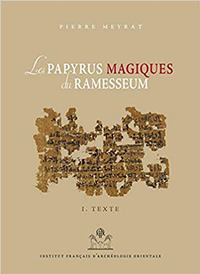| Main » Ad Board » ДРЕВЕН ЕГИПЕТ И АФРИКА » Литература |
| 24.06.2021, 17:10 | |
Магическите папируси от Рамесеума са серия писмени паметници с магическо съдържание от епохата на XIII династия на Средното царство (XVIII в. пр. н.е.). Те са написани основно с йератическо писмо, някои от тях и с курсивни йероглифи. Откритити са при разкопки през 1895-1896 от британски археологически екип и понастоящем се съхраняват в Британския музей. Настоящото издание включва факсимилно възпроизвеждане, йероглифна транслитерация и такава на латиница, превод и обширни коментари, предоставящи оригинални гледни точки и новаторски предположения за предназначението и начина на използване на папирусите. АЛТЕРНАТИВНИ ЛИНКОВЕ / ALTERNATIVE LINKS: - на древноегипетски език (йератическо писмо, йероглифи и латинска транслитерация) и френски език, от Google Drive, формат PDF. Сваляне с ляв бутон (downloading by left button) от страницата на предоставящия сървър, после през бутона стрелка надолу/after by down arrow button.
| |
| Views: 808 | Placed till: 24.07.2021 | Rating: 0.0/0 | |

